In the third instalment of “The Image Makers,” we explore a collaborative partnership which is truly unique. It is between revered fashion photographer, Nick Knight and the legendary designer, Alexander McQueen. The partnership runs deeper than a professionally advantageous collaboration, presenting if you will, a merger of minds. The imagery and artwork produced in the twelve years that Night and McQueen worked together blurred boundaries, and continually pushed conservative norms; exemplifying the brilliant results that can be achieved when two creative geniuses join forces.
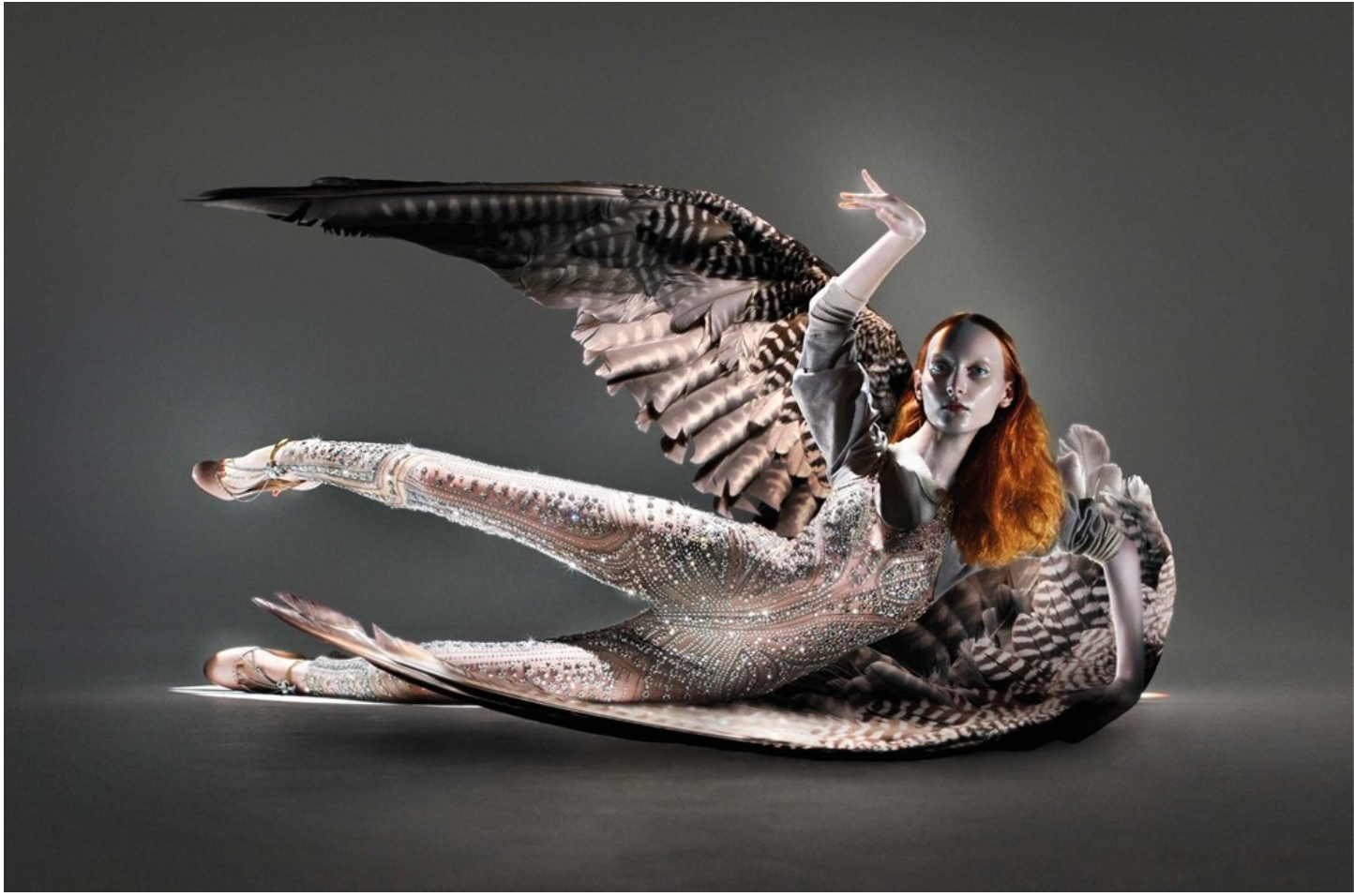
Nick Knight refers to himself as an image-maker —but within the fashion industry, the 56-year-old is regarded as one of the most influential photographers of this century.
KNIGHT’S BEGINNINGS
Born Nicholas David Gordon in London in 1958, he followed artistic leanings from an early age. He studied at Bournemouth and Poole College of Art and Design. Around this time, his first photography book, “Skinheads”, hit the shelves in 1982.
Before completing his studies, his rise to one of the world’s most sought-after photographers had already started. His notoriety led to a commission by I-D magazine’s editor, Terry Jones, for its fifth-anniversary issue. During this time, he also worked with Japanese designer Yohji Yamamoto – shooting his 1986 catalogue under the art director Marc Ascoli. From there, he went on to create successive catalogues for the designer, before scoring a position as the commissioning picture editor for i-D.
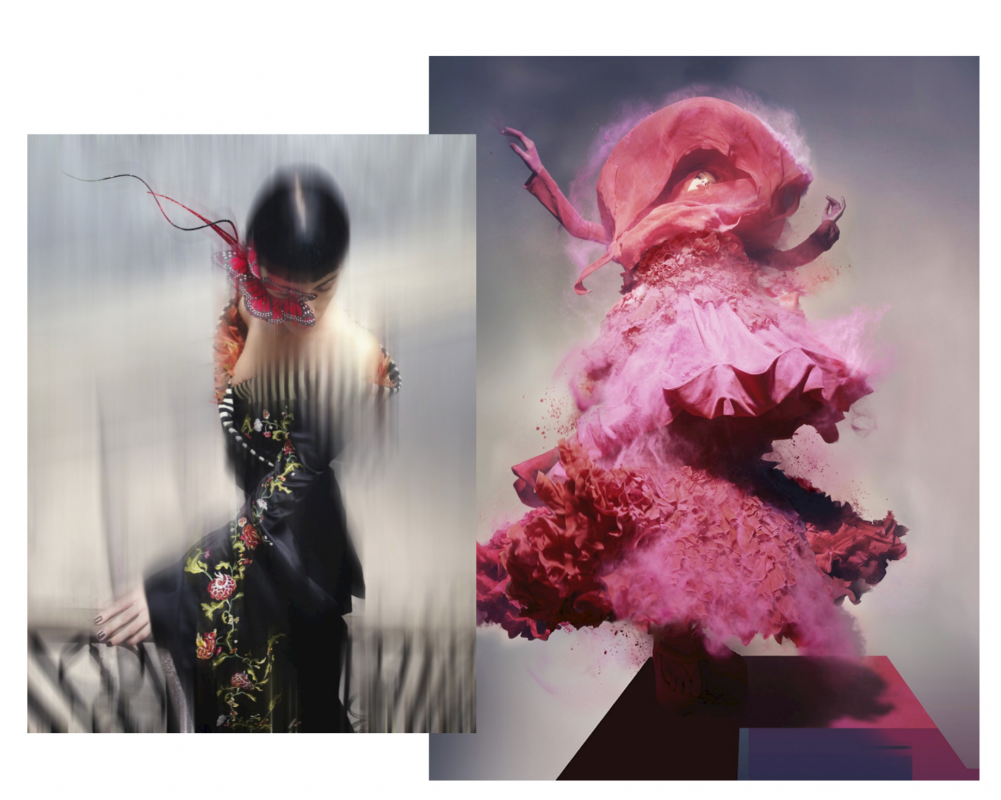
Knight has developed a worldwide reputation as an avant-garde digital artist and fashion photographer. His work continually pushes the boundaries of societal expectations, resulting in electrifying and captivating images. They leave an indelible mark in one’s mind, the result of three decades of tireless work. His impressive portfolio of images conveys a deeper subtext behind their subliminal advertising.
BOUNDLESS IMAGINATION
Knight’s desire to experiment with cutting-edge technologies is the reason behind the launch of his fashion website SHOWstudio.com. Its debut in 2000 aimed to show “the entire creative process from conception to completion.”
His ability to work outside recognisable paradigms is the reason that Alexander McQueen sought him out to discuss collaboration. Nick Knight, in turn, saw a reciprocal imagination in the designer that knew no boundaries. He later tells Huffington Post:
“(McQueen) wanted to do things differently from everybody else… To do things that felt much more exciting to work on… More experimental and more dangerous.”
ALEXANDER MCQUEEN
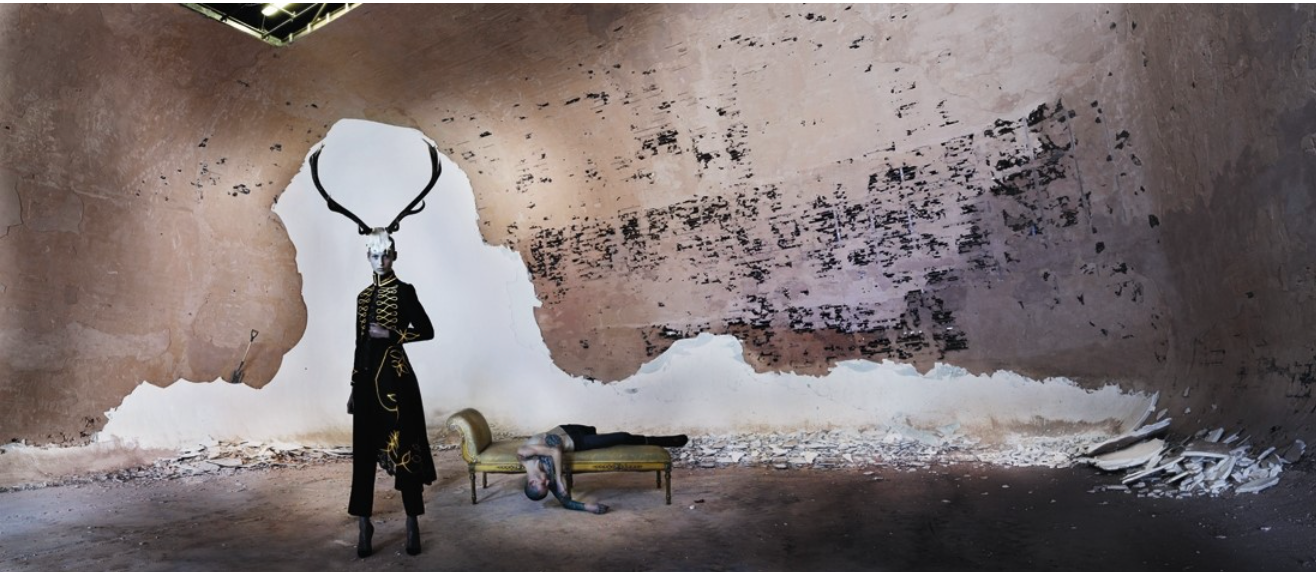
Throughout his tragically short life, some of Alexander McQueen’s nicknames include “l’enfant terrible,” and “the hooligan of English Fashion“, due to his working-class origins, and rebellious nature. He put controversial, eyebrow-raising shows on the map, often causing outrage; forcing people to reflect on their own ethical choices.
Undeterred, McQueen continued with his showstopping runway shows and mesmerising designs. This garnered the love and adulation of fashion worshippers the world over. His designs exhibit attention to detail and costume-like beauty seldom seen. And as a result, rockstars (David Bowie), A-List celebrities (Sarah Jessica Parker) and socialites (Plum Sykes) lined up for custom fittings. Even among the critics, he was noted for his exceptional talent, innovation, and unquestionably – among the best in his craft.
MCQUEEN’S BEGINNINGS

He was born Lee Alexander McQueen on March 17, 1969 in Lewisham, London. The youngest of six kids, his father was a taxi driver, his mother, a teacher.
Throughout interviews, he often speaks of being the “pink sheep” of the family. It is a reference to him being a misfit, but not a reject. At 18 years old, he told his family that he was gay. By that time, he describes having known for at least 10 years. After a rocky period, his family accepted his sexuality. His close relationship with his mother and protective love for his sisters influenced a lot of his work. His designs became a form of empowerment for women; referring to them as a layer of armour that could be used against the cruelties of the modern world.
“I grew up with three older sisters, and I saw them go through a lot of shit, I always wanted to be able to protect them.”
He explains, in an interview with The Guardian. “They would call me up to their room and I’d help them pick out clothes for work. Just, you know, what skirt with what cardigan, but I was always trying to make them look strong and sheltered.”
EPONYMOUS & INFAMOUS
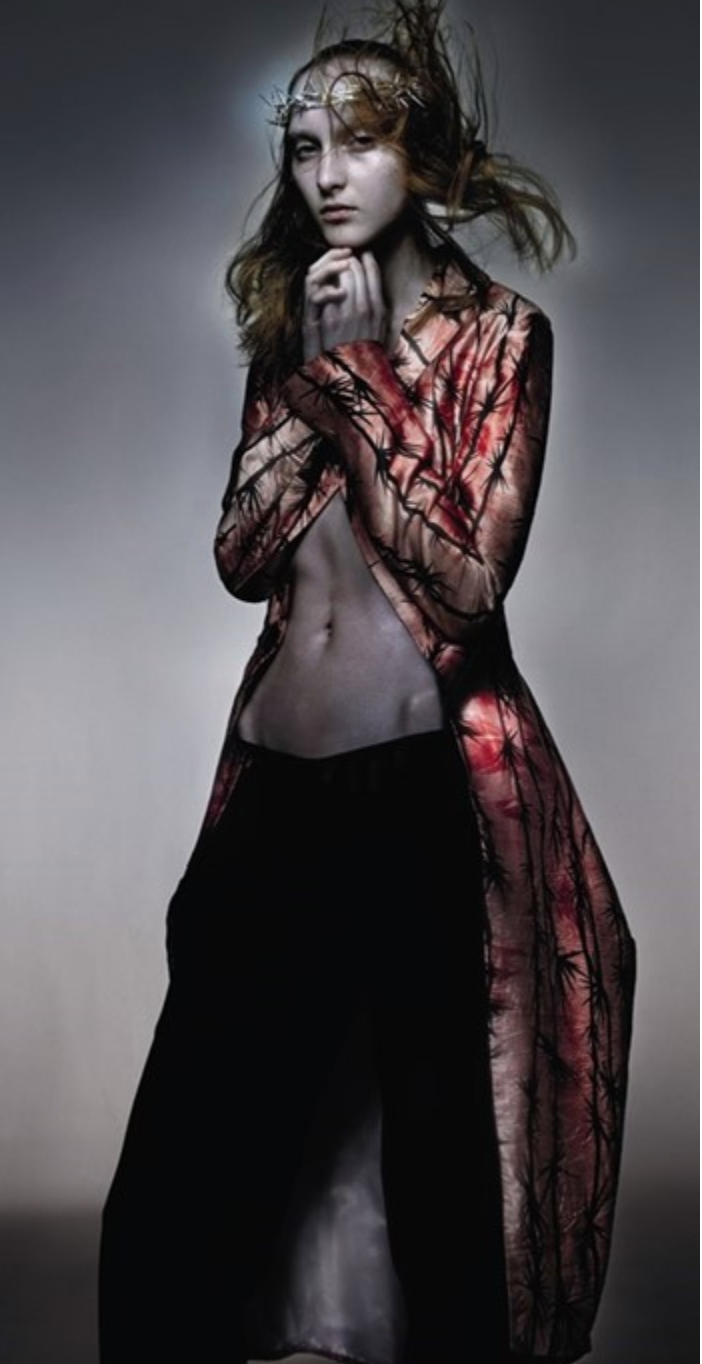
McQueen graduated with an MA from Central Saint Martins College in 1992. His controversial graduate collection, “Jack the Ripper”, was bought in full by the fashion editor Isabella Blow, who became his muse, mentor and influential supporter throughout life. She reportedly told him to go by the name Alexander in the fashion industry, rather than his given name, Lee.
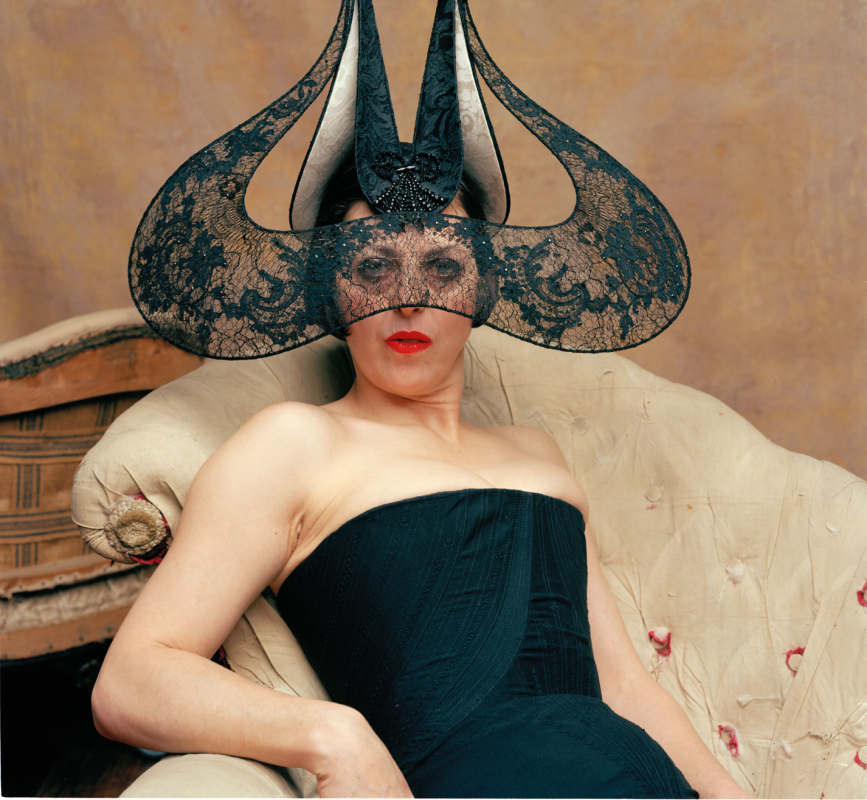
McQueen’s staring career as a tailor begins soon after his studies are over; paving the way towards the launch of his eponymous line in 1992. He staged lavish shows during London fashion week, and his name rapidly became infamous, most notably for his extremely low-slung, and largely unwearable, “bumster” trousers. He was the first to implement technology into fashion shows. And his rebellion against the industry’s traditional aesthetic is always visible.
NON-TRADITIONAL BEAUTY
Before inclusivity became a fashionable term, McQueen had already embraced it, using models that broke every stereotype. In the late 90s, a pregnant woman walked in his show; together with Knight he shot campaigns featuring disabled people; and he often used models that did not fit the traditional aesthetic beauty standards, including mentor and muse, Isabelle Blow.

His exemplary work gained him recognition, and in 1996 he was appointed as the Creative Director for Givenchy, where he worked until 2001. He was initially not well-received, with certain members of the press referring to him as “the hooligan of English Fashion.” Despite this bias, his designs and runway shows during those years set the fashion world ablaze.
While working for Givenchy, McQueen moonlit with his own label, staging elaborate catwalk shows in London. His S/S 1999 collection resulted in one of the most iconic images in fashion: Shalom Harlow in a white dress, with spurts of paint spraying her as the runway rotated beneath her.

In December 2000, McQueen granted Gucci Group access to the arch-rivals of LVMH, to buy a 51% stake in the Alexander McQueen name. This marks the end of his tenure at Givenchy. McQueen, for his part, claimed that working with Givenchy restrained him creatively. He welcomed a renewed focus on his own label in 2001.
His partnership with Gucci helped him expand to fashion capitals around the world, making him an international brand. By the end of 2007, he was one of the most notable names in fashion and a favourite among celebrities and worshippers of high fashion.
THE CREATIVE PARTNERSHIP BETWEEN NICK KNIGHT AND ALEXANDER MCQUEEN
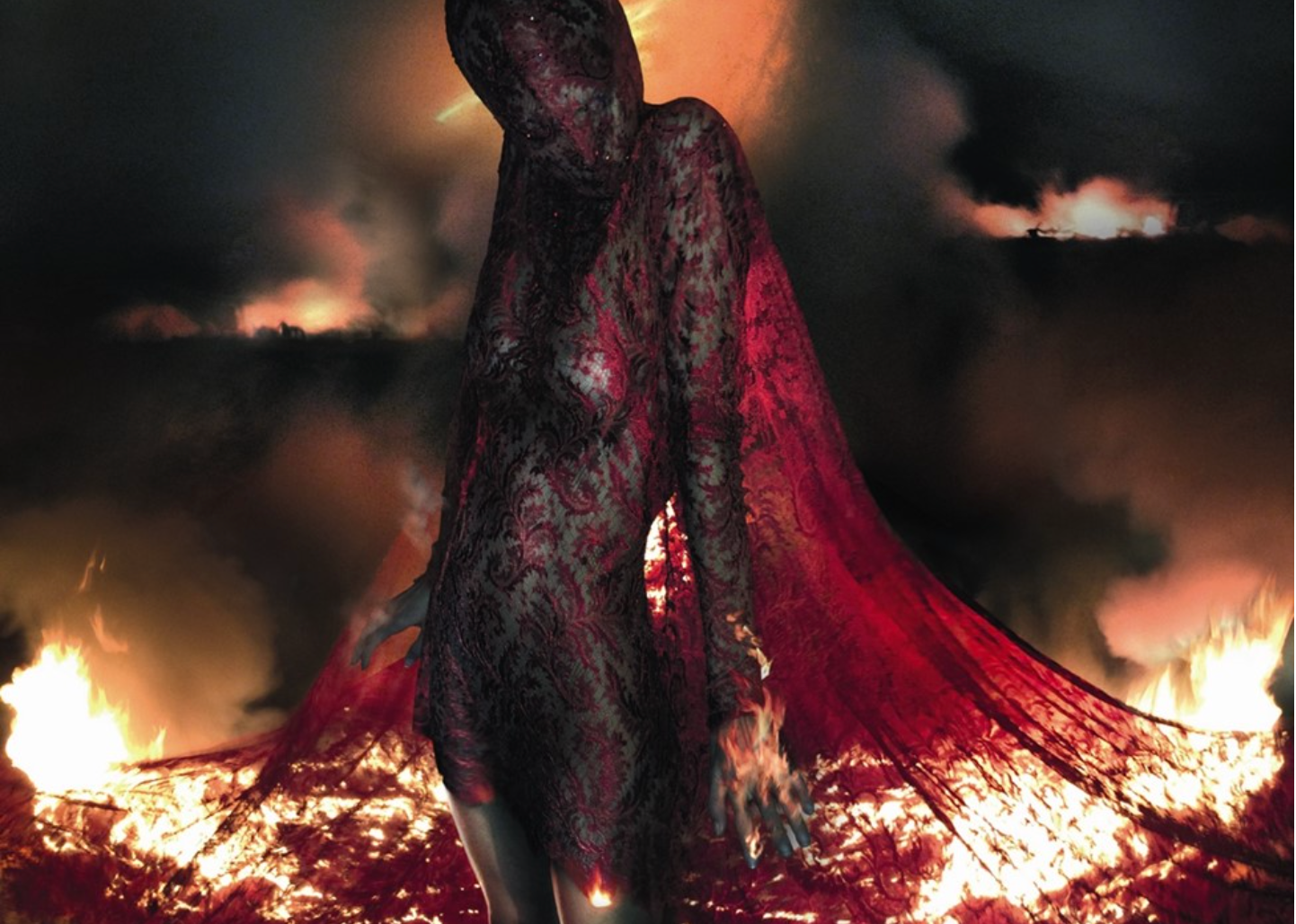
Both Knight and McQueen share the label of visionary, taking a similar approach to their work. Knight was drawn to McQueen’s designs from the first time he saw them. In an interview with the Huffington Post, Knight reflects,
“Our friendship started rather strangely to be honest”. He recalls that each time he saw McQueen’s work he’d comment to the stylist, ‘Fantastic Camilla, what are these?’ And she’d say, ‘Oh they’re from this new young designer who I think is really brilliant, Alexander McQueen.’ He goes on to say, “Then one Christmas I got a fax out of the blue from Lee saying: To Nick, Love Lee, Happy Christmas.’ ”
TECHNICALLY BRILLIANT
That same year, 1996, they met in person at the Christmas party of mutual friends – bonding over their mutual dislike of Christmas parties. Knight says that their working relationship took off from that point.
“We started working on images for the Venice Biennale and from then every possible opportunity we had to work together we’d try and grab it. Every season, every platform, whatever magazine or exhibition, or whatever it would be.”
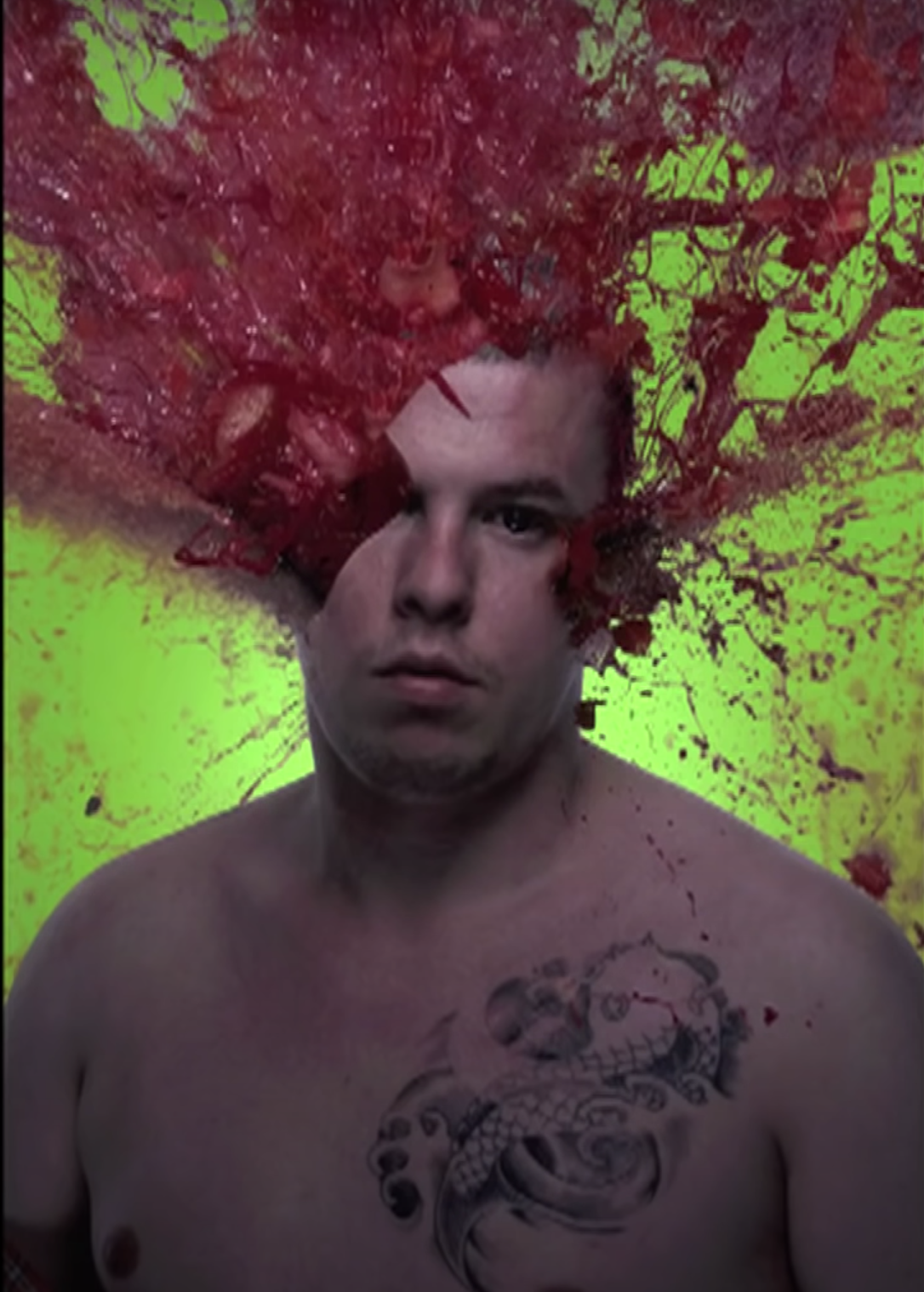
“Nick brings a complete professionalism and an understanding of the technique in what it does. And if I choose to work with anyone, there has to be that give and take between two people.” McQueen reflected in a behind the scenes interview which was released posthumously, titled “The White Interview”. He spoke about the Venice Biennale, “One of the pictures I asked Nick to do was of my head exploding, because that’s how I felt personally. Like my head is just about to explode.”
KINDRED SPIRITS CONFRONTING THE NORM
At the beginning of McQueen’s collaboration with Knight, he discovered not only a technically brilliant fashion photographer. But also, a kindred spirit, unafraid to venture with him beyond the world of accepted rules. “It’s not so much violence, it’s just confronting the norm.” McQueen explains, in relation to Nick’s work. “It’s good to let your anger out and let love in.”
Knight’s photographs of McQueen tend to depict McQueen’s overarching insecurities and emotional struggles.
“Lots of photographs that I did of [McQueen] were about the pressures that he felt, how he wanted to articulate the feelings that he had.”
Knight tells the Wall Street Journal. “One picture is of him in a padded cell, in chains, hanging from his own flesh. There was another shot we did where his head was exploding. At the time I just felt it was more imagery. You look back at it with the sad benefit of hindsight and you can see that perhaps those cries were more heartfelt than we imagined.”
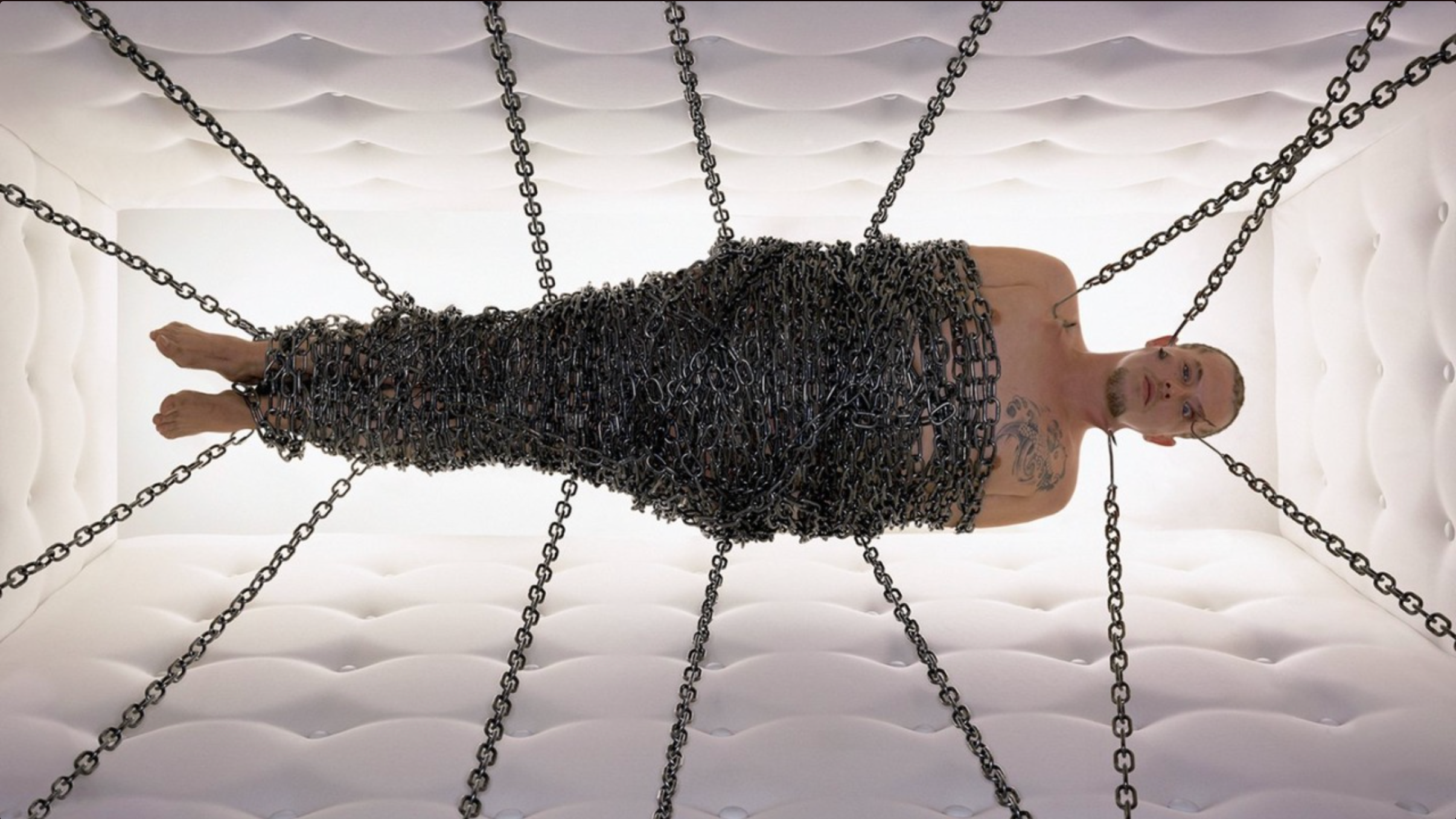
McQueen goes on to explain in The White Interview, “He [Nick] just confronts things with the same imagination as I do. You explore a different part of your psyche that people shouldn’t really go to, but you do. And what you see in Nick’s images, and my images, is just confronting that shit… I think I bring to him, my crazy brain and my crazy ideas that sometimes people don’t think can come off…” McQueen admits.
“That’s the challenge. If you don’t have a challenge in your work, then what’s the point carrying on and doing it? I think I bring Nick a challenge.”
BREAKING THE RULES AND CHALLENGING THE STATUS QUO
Knight often states that while he and McQueen did not intentionally set out to challenge standards of beauty, they were frustrated at the conservatism that was rife in fashion photography.
“Fashion is supposed to be an industry that’s forward thinking and is about breaking the rules, but it can be awfully conservative at times. Most of the images we see of women are really misogynistic.” Knight tells The Huffington Post.
“Women are cast into a very tight role, as being this 18-year-old blonde girl with one shape of body and that’s it. And that’s not how Lee saw women at all. He saw women in a much bigger and much more exciting way, and I think that the images we created helped push the boundaries of what is included in society’s vision of what’s beautiful.”
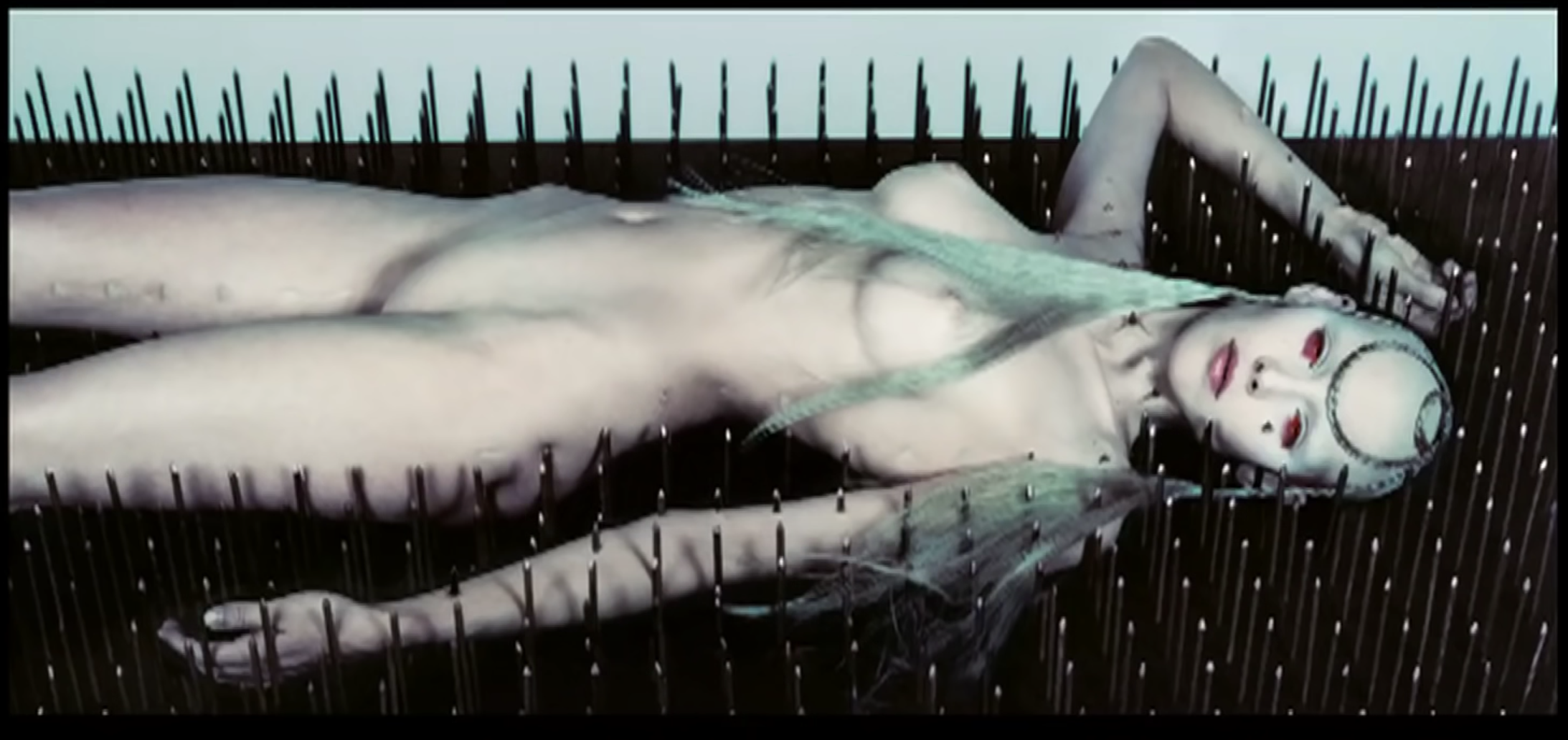
“When he wanted to do something it was always really exciting and it was always pushing the boundaries of what was technically possible and of what people would accept as beautiful.”
THE POWER OF AN IMAGE
McQueen focused on psychology over clothes. His designs are always a work of art; never displaying pretty faces or pretty clothes simply on a superficial level. Psychological themes cropped up time and again, constantly reflected in Knight’s photography. McQueen calls his shows “my own living nightmares.”
Knight supported McQueen’s vision. “There’s a lot of bigotry and there’s a non-comprehension of the power of the image and what one can do with it. Those are the sort of issues both Lee and I had to deal with growing up in the fashion industry. So although we didn’t set out to change the rules, both Lee and I saw beauty elsewhere.”

“When you see a woman wearing McQueen, there’s a certain hardness to the clothes that makes her look powerful,”
McQueen says in an interview with the Guardian.
“It kind of fends people off. You have to have a lot of balls to talk to a woman wearing my clothes.” It is this sense of impenetrability, he says, that gives his clothes their sex appeal: “When a woman gets dressed up to go out at night, she wants to give 50% away, and hold the rest back. If you’re an open book, there’s no allure.”
“When we work together, we think as one.” McQueen said, “Because usually what I was thinking, he was thinking, no matter which direction, we both had the same idea. But we also admit to each other that sometimes things don’t work out.”
VISIONAIRE 20 AND A COLLABORATION WITH BJORK
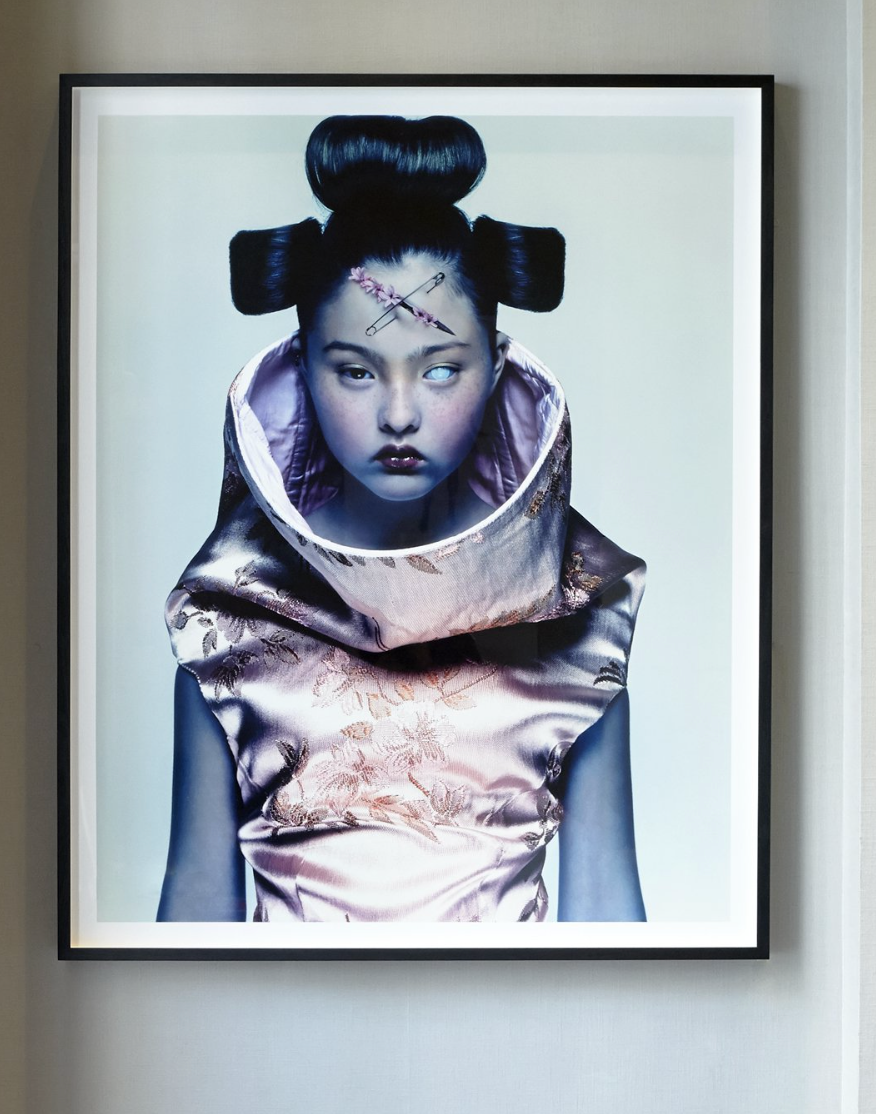
Knight’s futuristic rendering of Devon Aoki in McQueen for the cover of Visionaire 20 (1997) is still among the most iconic images produced as a result of the pair’s collaborations. Shot in cold blue light and wearing a silk dreswith embroidering, the young Aoki appears as a wild cyborg. She’s a one-eyed geisha whose forehead has been sliced open and is held together with a safety pin. In a surreal twist, the gash does not bleed blood, but springs forth life, signified by a twig of cherry blossoms.,
“HOMOGENIC”
In February 1997, while on the search for visual artwork for her album cover, “Homogenic”, Björk was reading an issue of Visionaire when she was captivated by the image of Devon Aoki, sporting a safety-pinned gash in her forehead. Out Magazine wrote, “something about the coldness, and the hardness contrasted with the flowers erupting from this digitally mastered image – resonated with Björk.” She subsequently approached Knight and McQueen about art-editing an album sleeve that would represent not just her, but the ideas of the album.

‘She rang me up,’ McQueen remembered, as written by Out Magazine, ‘and she explained what the album was feeling: she said it was kind of a blue period in her life.” The collaborative team of McQueen, Knight and stylist, Katy England, went on to design and create all the artwork for Homogenic, an album so successful it planted Björk firmly with in the international realm of music fame.
IT’S A JUNGLE OUT THERE
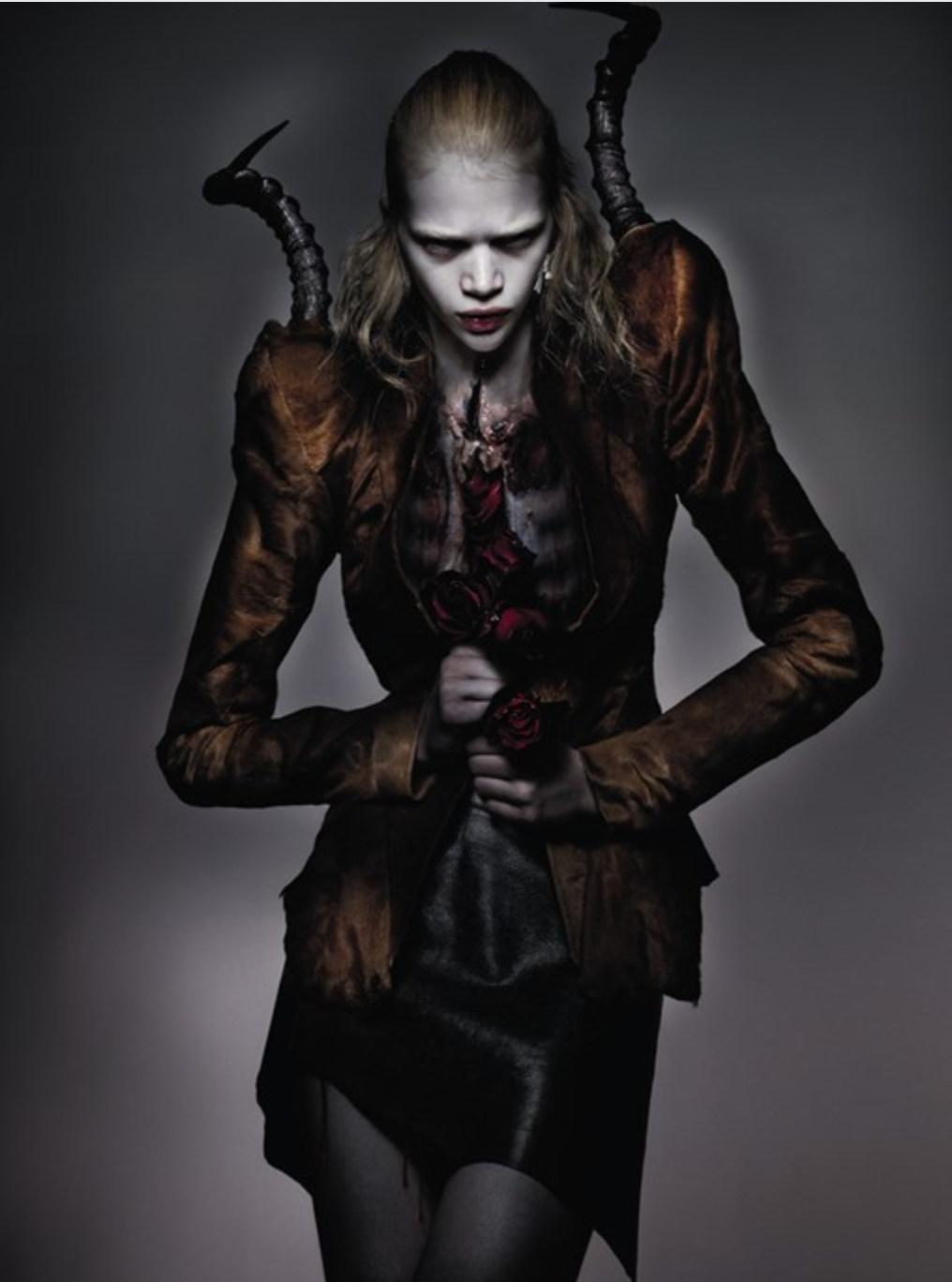
McQueen’s A/W 1997 collection, appropriately titled, It’s a Jungle Out There, focused on the food chain and natural selection. He collaborated with Knight on the campaign, who later did a modern repriasal using original designs.
“An awful lot of fashion and business is very dull,” Knight explained to the Huffington Post. “People are very conservative in lots of ways, sexually or politically, and Lee wasn’t.
CONTROVERSIAL EXTREMES
For McQueen, it was all about stirring emotions. “The whole show feeling was about the Thomson’s gazelle. It’s a poor little critter—the markings are lovely, it’s got these dark eyes, the white and black with the tan markings on the side, the horns—but it is the food chain of Africa.” McQueen quoted in Caroline Evans, Fashion at the Edge: Spectacle, Modernity and Deathliness. “As soon as it’s born it’s dead, I mean you’re lucky if it lasts a few months, and that’s how I see human life, in the same way. You know, we can all be discarded quite easily. . . . You’re there, you’re gone, it’s a jungle out there!”
THE AFTERMATH
In the aftermath of It’s a Jungle Out There, McQueen’s brilliance as a designer and flair for controversy was undisputed and arguably unrivalled. “I don’t want to do a cocktail party. I’d rather people left my shows and vomited,” he told Time Out magazine, with characteristic bluntness, later in 1997: “I prefer extreme reactions. I want heart attacks. I want ambulances.”
FASHION-ABLE 1998
In 1998 Knight and McQueen produced a never before seen editorial for McQueen’s guest edited issue of Dazed & Confused magazine for “Fashion-Able”. Unprecedented within the realm of fashion, the project features a number of models with disabilities in order to challenge beauty ideals.“Lee would find beauty in places where other people wouldn’t look.” Knight, a strong advocate of inclusive fashion, later told the Huffington Post.
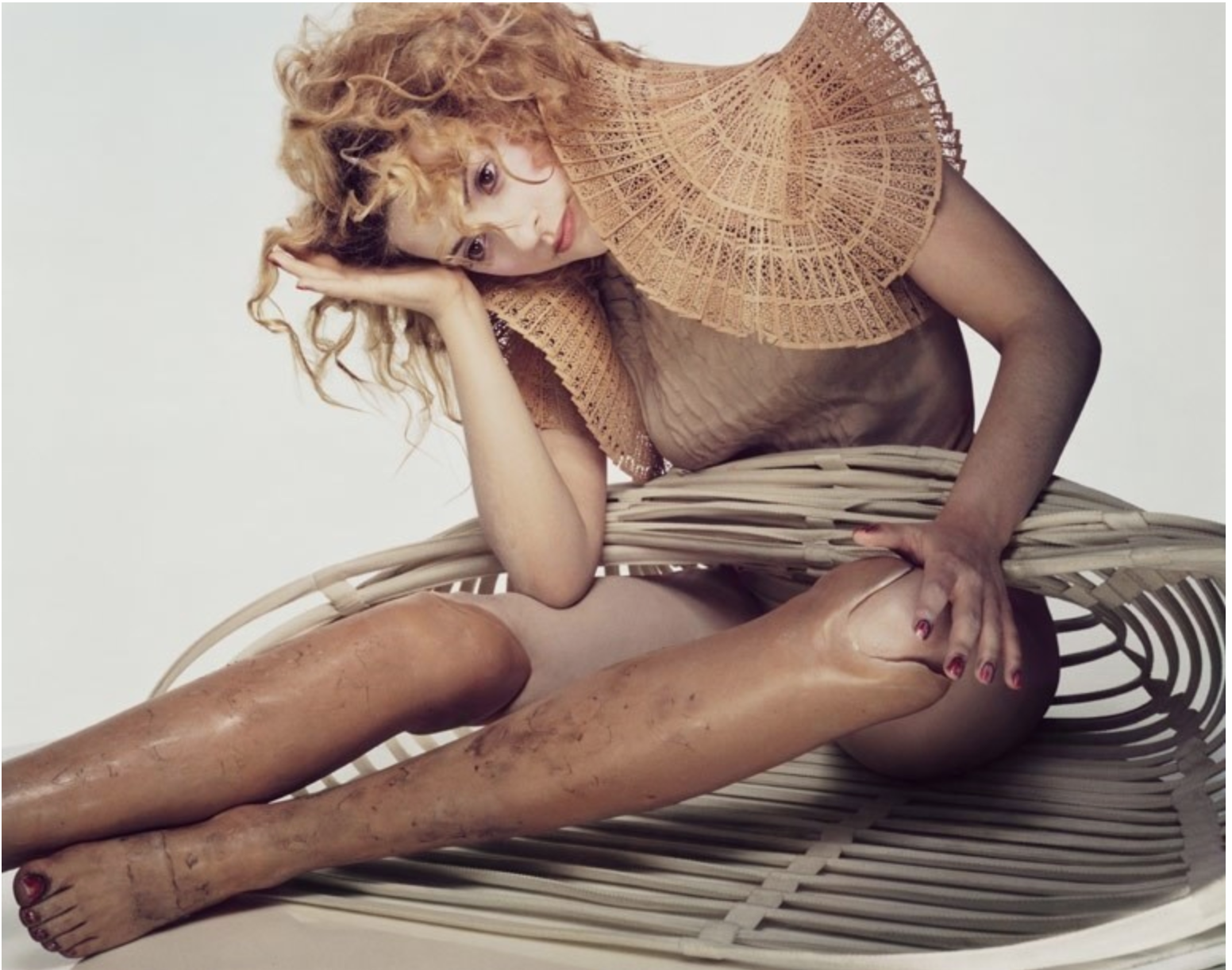
In Knight’s striking compositions, dancer David Toole’s pose is one of pure strength and agility while athlete Aimee Mullins’ alabaster skin merges with fibreglass prosthesis in a display of pure ardour, accomplishment and allure. Knight and McQueen paint a different world. In it, human value and aesthetic beauty do not conform to the myth of a perfect ideal.

Twenty-four years on from the time Dazed & Confused joined with Alexander McQueen and Nick Knight for Fashion Able, it is only in recent years that the fashion world has shifted towards inclusivity in the use of disabled models. This further reflects how revolutionary the collaboration between the designer and photographer was.
BLADE OF LIGHT 2004

Undoubtedly the collaborative work between Knight and McQueen changed the fashion industry forever, using digital installation and streaming in traditional runway shows and videography that pushed the limits, and phenomenal fashion campaigns.
The infamous Blade of Light, was an iconic campaign which made great use of cinematic effect. Knight gave his photoshoots with McQueen an over-the-top and exaggerated abstract feel. His use of dramatic lighting and the slight distortion in his work lifted it above traditional editorial spreads. Knight filmed the entire working process behind the picture.
Featuring the Alexander McQueen Depression-era marathon dance-inspired S/S 04 Deliverance collection, and choreographed by Michael Clark, Nick Knight’s Blade of Light image has become one of the photographer’s most famous works. Knight interprets McQueen’s vision of a bus queue. In it, people wear his Spring/Summer 2004 “Deliverance” collection. They are being hit by a shooting comet.
COLLABORATION WITH PUMA
In 2005 Puma announced their first collaboration with Alexander McQueen. The campaign imagery for the collection, which went on sale in Spring 2006, was shot by Nick Knight and inspired by Lee McQueen’s passion for nature.
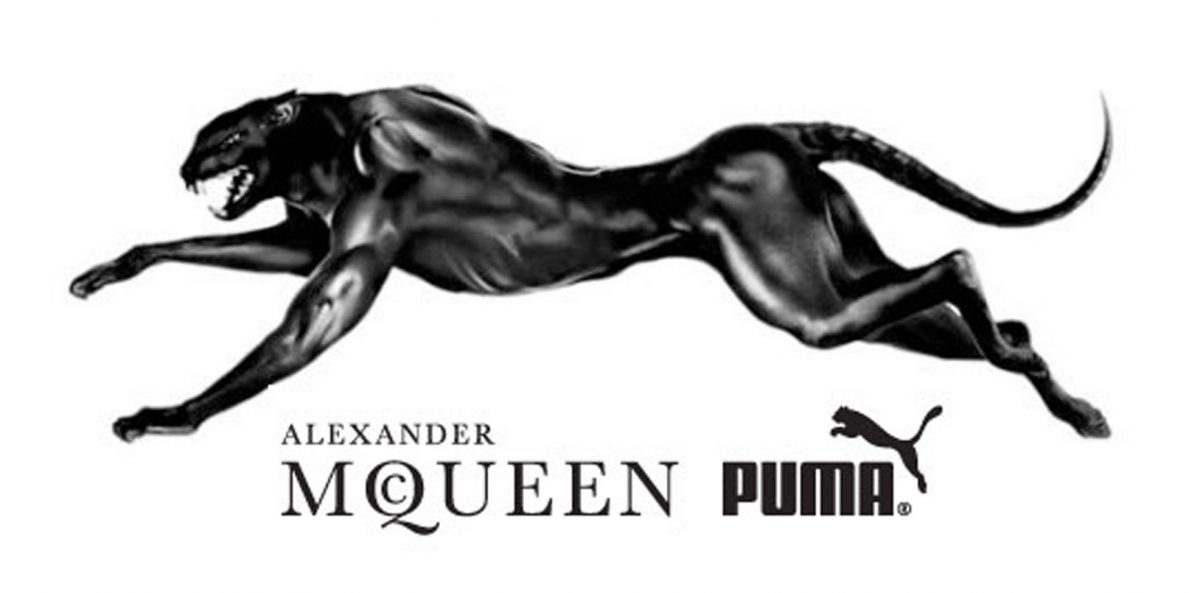
The duo designed the ManCat logo, fusing together a visually compelling line with intricate craft-ship that juxtaposes the contemporary with the sophisticated. The work between Puma and McQueen, assisted by Knight, was instrumental.
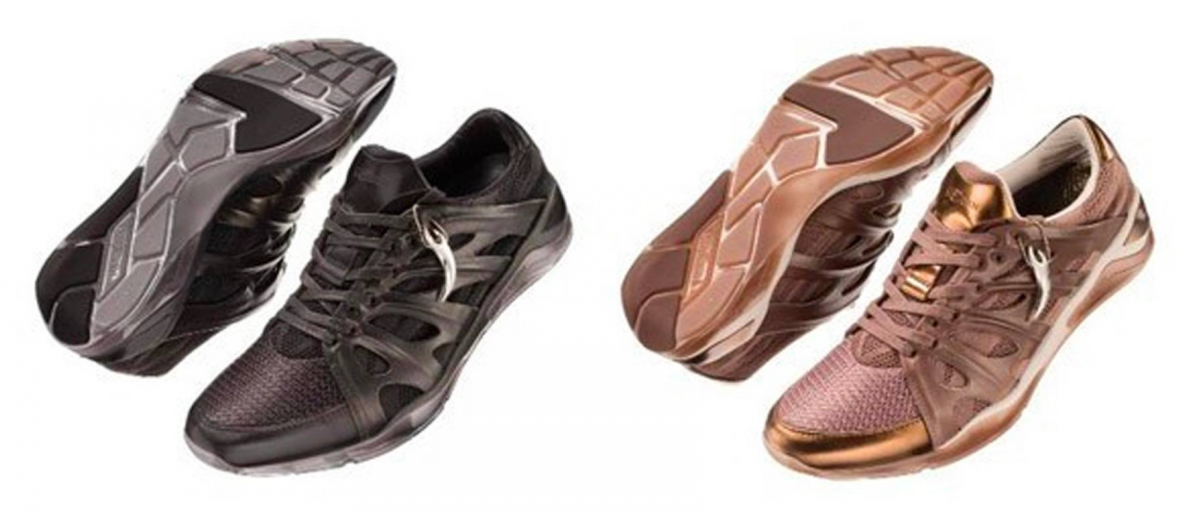
It laid the groundwork for fashion’s acceptance of the bulky or conceptual sneaker while pushing the irony of exaggerated proportions and palettes as more than a faux pas. It was also one of the original collaborations between fashion and sportswear.
NICK KNIGHT & ALEXANDER MCQUEEN, SNAKES, 2009
Snakes, shot in 2009 for McQueen’s final Spring/Summer 2010 Plato’s Atlantis collection, was one of the last collaboration’s between Knight and McQueen before the designer tragically took his own life.
The image placed model, Raquel Zimmermann, on a bed of sand, her body merging with an undulating mass of serpents. Knight reimagined McQueen’s Atlantis and presented his audience with a sensuous, predatory creature in a fantastical land. McQueen best sums up this spellbinding photograph: “I think [women’s] sexuality is their ultimate weapon…I think a woman’s sexuality in any shape or form is a powerful thing.”
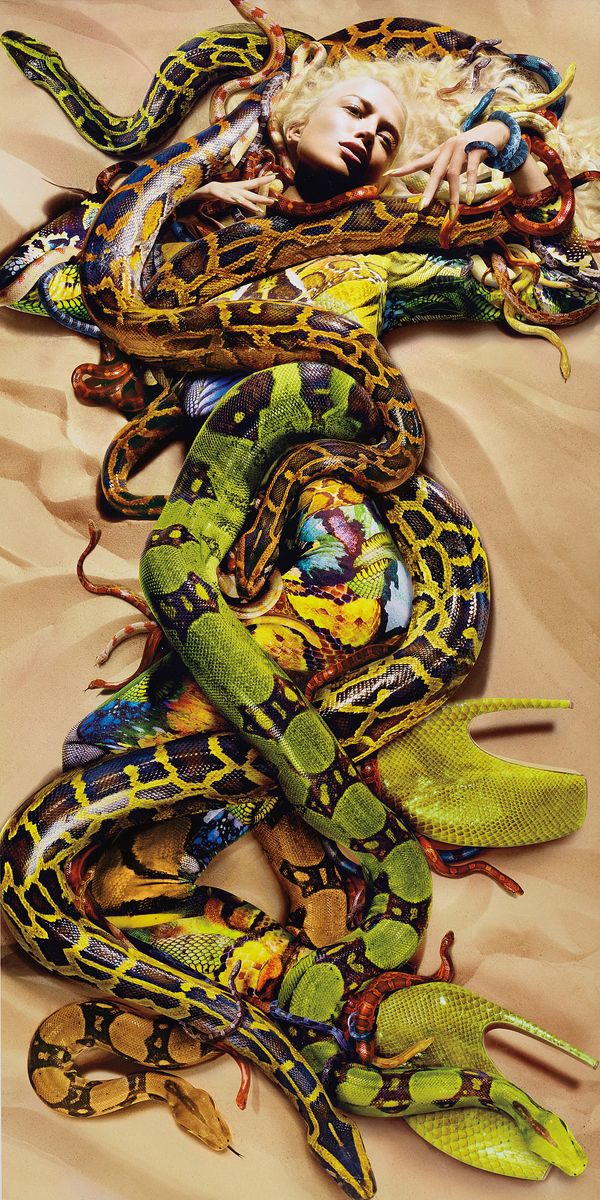
The use of digital manipulation allowed Knight to play with surrealist imagery in fashion. The boundaries of the human body begin to blur, and the highly complex digital print on her apparel becomes a second skin. Knight reflects in SHOWstudio that Zimmerman’s body, the garment and the wider natural world synthesise into one hypnotic fantasy.
PLATO’S ATLANTIS COLLECTION 2010
On October 6th, 2009, McQueen unknowingly staged his final fashion show, in a collaboration with Knight, in what was to serve as the forebear of fashion’s streaming revolution. The Plato Atlantis show featured huge, menacing robots roaming up and down the side of the runway, following the models, filming their every movement, then swivelling sinisterly around and filming the front row. “Alexander McQueen had basically turned the show into a spectacle that was broadcast across the internet,” Knight tells British Vogue.
FASHION ENTERTAINMENT
In his interview with Vogue, Knight described the Spring/Summer 2010 Plato’s Atlantis collection, “He (McQueen) turned that fashion show into entertainment and that’s where the difference is,” the photographer reflected. “That’s why there’s three and a half million hits on YouTube. Making fashion into entertainment across the internet is the key to it.”
Lady Gaga, launched her Bad Romance single at the show, with the models walking down the catwalk at the end to that soundtrack. Nick said that the “Lady Gaga fans watched the show live online – which had a slightly detrimental effect to our streaming capabilities.
Yet something that was previously going out to 20,000 people at the time (and that would have been on a good day) went out to six million people.” The McQueen / Knight duo experienced a ground breaking moment in the capabilities of live runway shows, and the way in which they could reach an audience. It was not only a momentous moment between the designer /photographer, but a shift of the change in what was to come in the way fashion could instantaneously reach worldwide mass audiences.
MCQUEEN’S TRAGIC END
“He never seemed the sort of person who was going to take his own life.” Knight said in an interview with the Wall Street Journal. “He always seemed so sure of himself and so tough, in a confrontational way. You felt he was going to take on anybody; the fashion world, the art world, anybody. He wasn’t frightened of anything.”
On the 11 of February 2010, McQueen, pushed to the edge by the death of long term mentor Isabella Blow, followed by his dearly beloved mother, devastatingly fell victim to the demons within his own head, choosing to end his life. The fashion world at large shed a collective tear at the loss of a brilliant designer, and a beautiful, down-to-earth and genuine soul.

Alexander McQueen’s vision inspired millions, and few were as personally moved as his longterm collaborator, Nick Knight, who has since continually honoured him over the years, through images, films celebrating his life and exhibitions dedicated to their work together.
“I just want to be a wallflower.” McQueen once told the Guardian. “Nondescript. Just not anything. I don’t want to see me.”
BLACK
Knight, in a powerful photographic tribute, uses previously unseen photography for a piece, “Black”. It honours his beloved friend, full of shots from backstage at the iconic 2004 McQueen Black Event. The enormous tableaux showcases a number of breathtaking looks from the runway event. The likes of by Kate Moss, Naomi Campbell, Gemma Ward and Lily Cole and McQueen himself appear throughout the piece.
“It’s tricky working by myself on an image that I know Lee and I would have worked on together,” Knight wrote on his website, SHOWstudio. “I’m very aware of what he would like and what he wouldn’t, so in some ways I’ve been cautious. But we’ve created what I hope will be considered a very beautiful and incredible image.
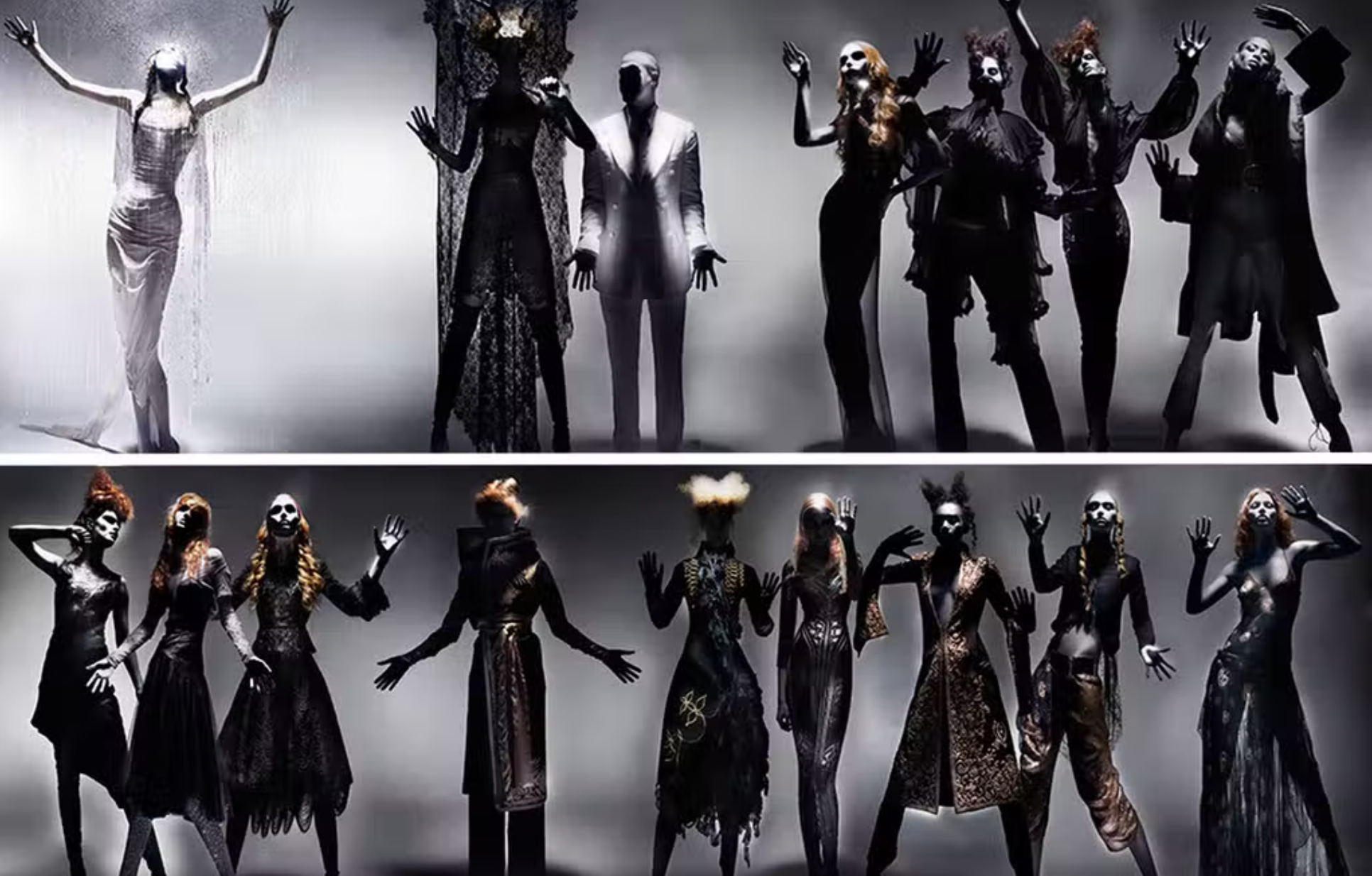
McQueen, nearing completion of the project and full of anticipation, insisted they shoot behind-the-scenes footage at Earls Court (the event venue). The unseen footage comprises a short film by Nick Knight, released posthumously – “Black.”
SAVAGE BEAUTY EXHIBITION AT THE MET MUSEUM
In 2011, the “Savage Beauty” exhibition detailing McQueen’s career, was on display at the Met in New York, where Nick said it drew an eclectic crowd. “There were people waiting in the queues around the block to try and get in and they weren’t just fashion students,” the photographer reflected. “There were a lot of ladies and men in their fifties and plumbers. Everybody wanted to see it, because it touches something within you.”
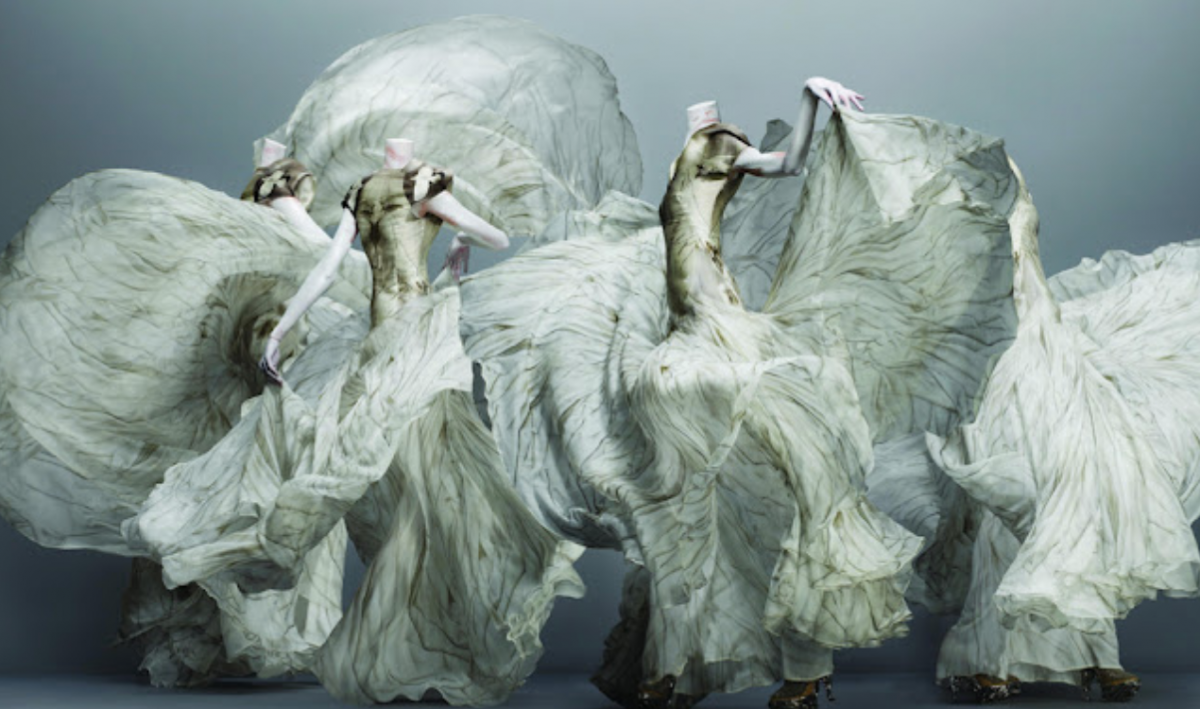
It moved to the Victoria & Albert Museum in London until August 2. Demand was so high that the museum stayed open through the night for the final two weekends of the show. It became the most popular show ever staged at the museum; selling over 480,000 tickets during its 21-week run.
SHOWSTUDIO EXHIBITION: KNIGHT & MCQUEEN
SHOWstudio presented an exhibition of Nick Knight’s fine art prints, curated by Carrie Scott to celebrate Knight’s dynamic collaborations with Alexander McQueen, and to coincide with the opening of Savage Beauty at the Victoria & Albert Museum, the exhibition showcased Knight’s arresting re-imaginings of McQueen’s collections. The prints are monumental in scale. Here, Knight’s visual tapestries for McQueen are on display together for the first time at the SHOWstudio gallery in Knightsbridge.
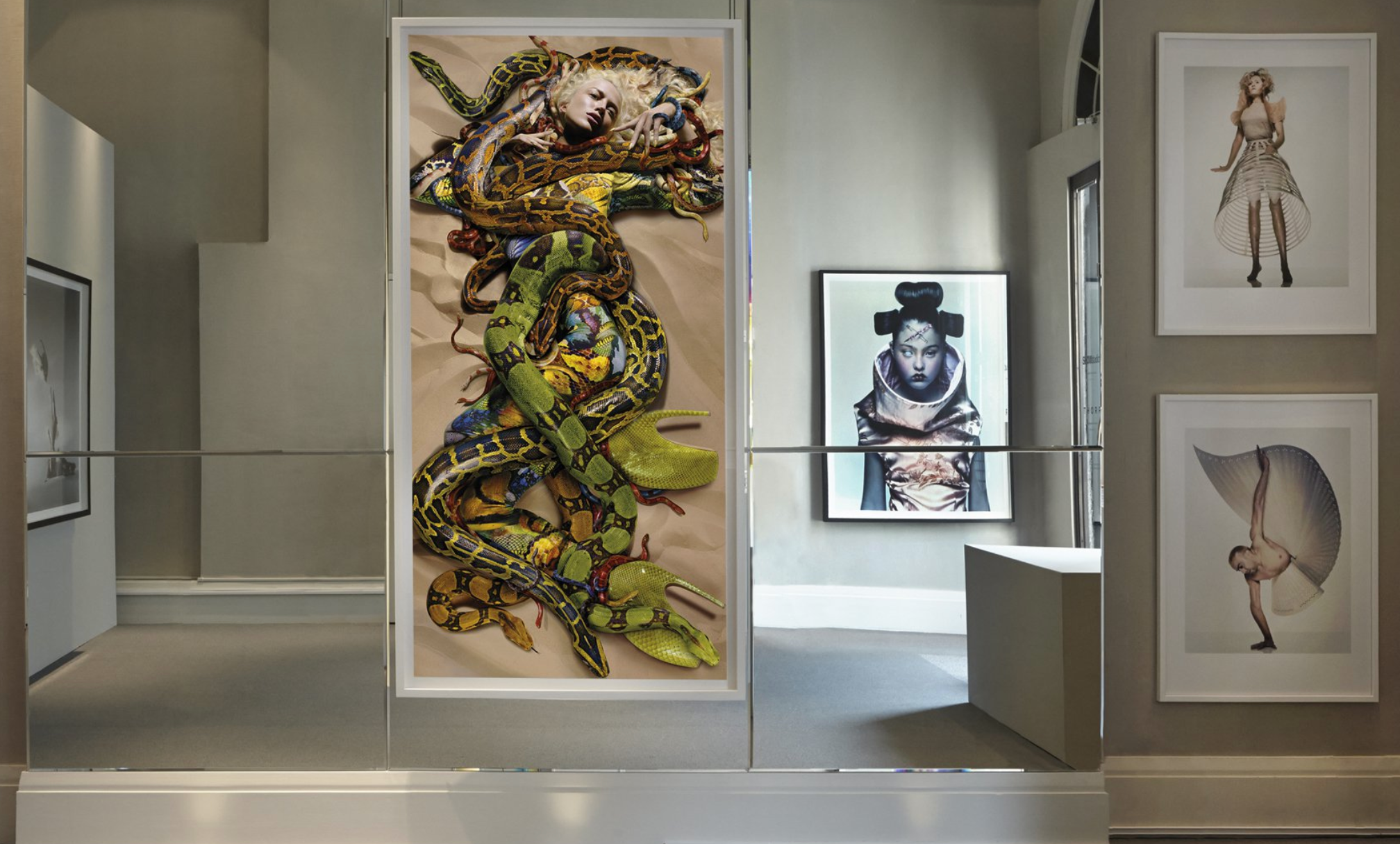
ILLUMINATIONS
The exhibition’s images include some of the most elaborate and technical of the pair’s generation. And during an interview with Knight for SHOWstudio in 2009, McQueen reveals that he saw illuminations of his dreams and his nightmares in them.

Their work is similarly daring in their worldview. Their perspective on fashion and ability to fly beyond the coop is legendary. Nick Knight’s collaboration with Alexander McQueen, running from 1996; continues past the designer’s death in 2010. Knight still honours his friend through touching tributes.
Knight and McQueen are both trailblazers in their respective fields. In their hands, fashion, flesh and form are as malleable as each roll of fabric, length of film or digital file. The unique flaws of life are a thing of beauty, and debris unseen is a work of high art. The harmonious working relationship between the pair, and resulting projects, are sure to stand the test of time.
Subscribe to FIB’s Weekly Breaking News Report for your weekly dose of music, fashion and pop culture news!






